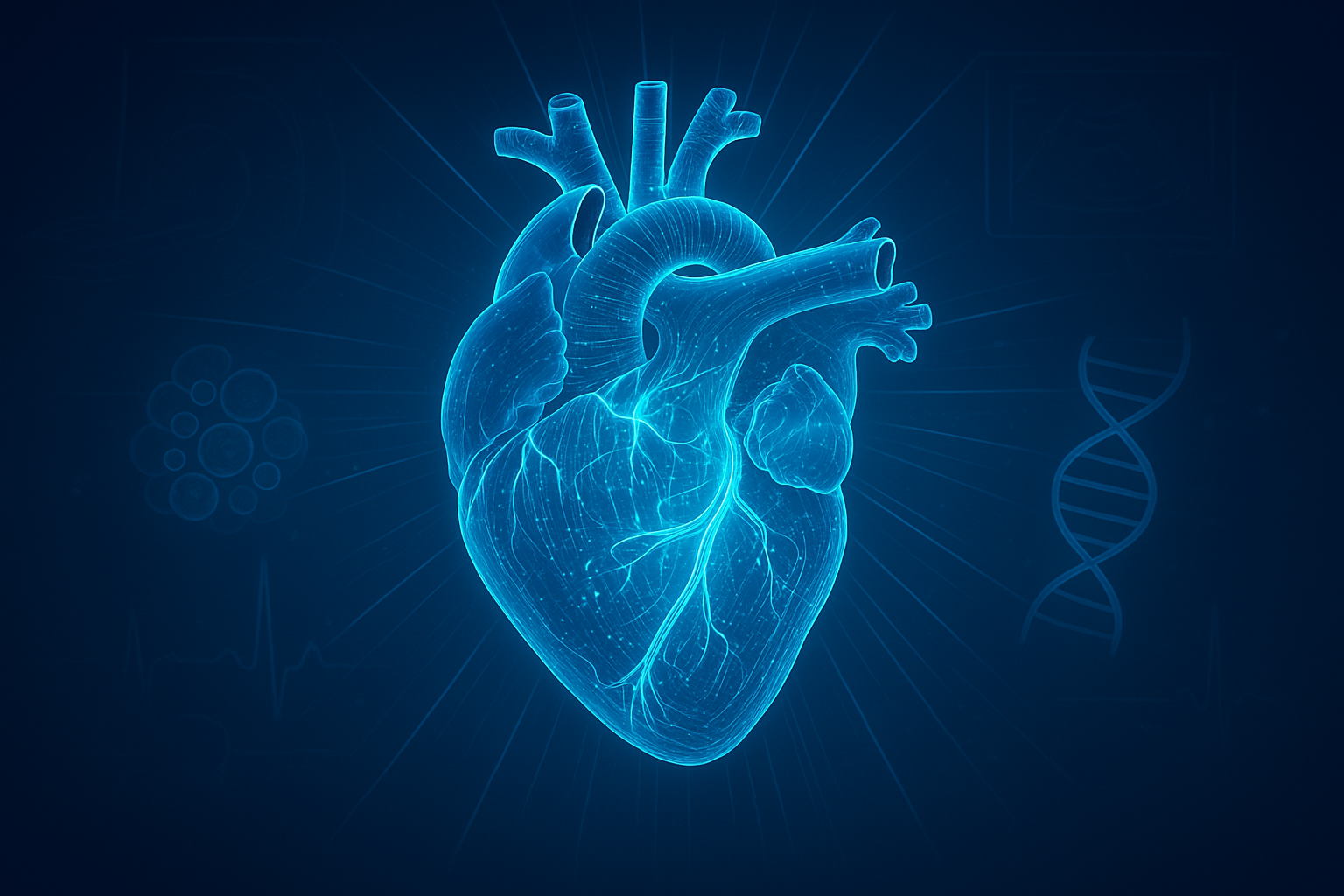Cardiology—one of medicine’s most dynamic and essential disciplines—focuses on protecting, diagnosing, and healing the heart. Traditionally, discussions on heart health revolve around cholesterol, blood pressure, chest pain, and shortness of breath. Yet, the field is evolving fast, revealing surprising links between mental health and cardiac function and unmasking patient stories where heart disease masquerades under unusual symptoms. This blog dives deep into two unexpected angles: the dramatic interplay between stress and the heart, and those cases when heart disease presents far from the classic chest pain most people expect.
The Heart-Brain Connection: Stress Cardiomyopathy (“Broken Heart Syndrome”)
Most people associate heart attacks with clogged arteries, high cholesterol, and poor lifestyle. However, a lesser-known but increasingly recognized condition, stress cardiomyopathy—or Takotsubo syndrome—reminds us our emotions can directly trigger heart events. Takotsubo cardiomyopathy is named after a Japanese octopus trap, as its appearance on imaging resembles that shape. The syndrome typically arises following extreme emotional stress—such as grief, sudden shock, or even happy excitement. Unlike typical heart attacks, it’s not caused by blocked arteries but rather a surge of stress hormones, chiefly adrenaline, that “stun” the heart muscle.
Women, particularly post-menopausal, appear most susceptible. Research finds that the drop in estrogen after menopause may leave women’s hearts vulnerable to these hormone surges. Patients describe the onset much like a classic heart attack—crushing chest pain, shortness of breath, nausea—but angiography shows their arteries are clear. Instead, the left ventricle balloons outward, and the heart temporarily struggles to pump efficiently.
Most people recover fully with supportive care and medications, but the phenomenon remains a potent reminder that heart health is entwined not only with diet and exercise, but also with how we process emotional trauma.
Why Stress Matters
Chronic stress triggers biological changes. When the brain perceives a threat—real or imagined—it activates the “fight-or-flight” response. Adrenaline and cortisol flood the bloodstream. Blood pressure rises, the pulse quickens, and blood sugar increases, all to prepare the body for immediate action. While these responses are useful in short bursts, prolonged stress can damage blood vessels, encourage clot formation, and create long-term risks for arrhythmias and even heart failure.
Recognizing symptoms like chest pain, palpitations, or fainting during emotional turmoil might save lives. Doctors now ask more about stress, anxiety, and life events when screening for heart disease.
Hidden Heart Disease: When Pain Isn’t in the Chest
The image of a person clutching their chest in pain is universally associated with heart attacks. Yet, many cardiac diseases can present with uncharacteristic symptoms—or manifest far from the chest. For example, congenital heart defects such as Shone’s complex may show up as headaches, dizziness, fainting, swelling in extremities, or even complications in unrelated organs.
In older adults and women, heart disease may present with jaw pain, back pain, indigestion, or a general sense of fatigue. Women are particularly likely to report “atypical” symptoms during a heart attack—nausea, shoulder pain, dizziness, or unexplained shortness of breath. These symptoms can be confused with gastrointestinal problems, musculoskeletal injuries, or viral infections.
The Role of Advanced Diagnostics
Cardiologists increasingly rely on advanced imaging (such as CT Coronary Angiograms and echocardiography) and thorough patient histories to unmask hidden threats. Modern blood tests (like high-sensitivity troponins and NT-proBNP) allow earlier disease detection, even when symptoms are ambiguous.
Remote monitoring devices, wearable ECGs, and telehealth also help catch arrhythmias and cardiac ischemia that might not be obvious during a routine checkup. Patients can now transmit real-time data from their homes for analysis, shifting cardiac care toward prevention and rapid intervention.
Real-World Stories: When “Hidden” Disease Changed Lives
Consider the case of a middle-aged woman who arrived at the emergency room with overwhelming nausea and tiredness, but no chest pain. She was initially treated for gastritis. Only when her ECG revealed changes and cardiac enzymes were elevated did her doctors recognize a heart attack. Early recognition of atypical presentations saves lives—especially as heart disease remains the top killer worldwide.
Another patient with rare congenital heart disease presented with frequent headaches and fainting spells—symptoms often blamed on dehydration or stress. Cardiac imaging uncovered structural heart issues, prompting a unique surgical repair that ultimately resolved his non-cardiac symptoms.
The Modern Cardiologist’s Toolkit
- ECGs and wearable monitors allow continuous rhythm tracking.
- Advanced echocardiograms and CT angiography detect even minor changes in cardiac function.
Telemedicine platforms bring expert advice and monitoring into the patient’s home.
Blood markers like NT-proBNP and high-sensitivity troponin aid in early, precise diagnosis.
-
Prevention and At-Home Care
Regardless of risk, every heart benefits from simple steps:
- Maintain a balanced diet rich in vegetables, fruit, and whole grains.
- Move regularly, striving for at least 150 minutes of exercise weekly.
- Prioritize sleep and practice stress management through meditation, therapy, or social support.
- Control blood pressure, cholesterol, and blood sugar through regular screening and adherence to medications.
-
Looking to the Future: Artificial Intelligence and Telehealth
AI-driven analysis of imaging, ECGs, and patient histories is automating early detection of subtle cardiac issues. Algorithms can predict dangerous arrhythmias, flag abnormal rhythms before symptoms arise, and even assist in virtual cardiac consultations. Telehealth, spurred on by the COVID-19 pandemic, enables continuous care in rural and underserved communities.
Personalized medicine—harnessing genetic profiles, digital records, and predictive analytics—promises tailored treatment plans that go beyond a “one-size-fits-all” approach.
Conclusion
The story of cardiology is expanding beyond cholesterol and blockages. Emotional health and hidden presentations are shaping the future, forcing clinicians to look past the expected and embrace a holistic view of heart health. Whether it’s the stunned heart of Takotsubo syndrome or the fainting spell that masks congenital disease, the field continues to challenge old assumptions—and save lives—by recognizing the unexpected

